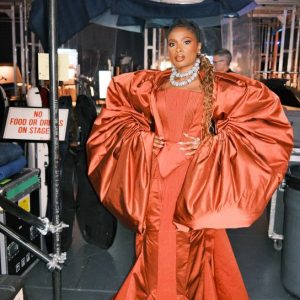Title: How Tina Turner Prepared for Her Iconic Film Roles: A Look into the Queen's On-Screen Magic
Tina Turner, the unstoppable force of nature behind such classics as “Proud Mary” and “What's Love Got to Do with It,” was not just a music legend; she was also a captivating actress whose performances in films like “Tommy” and “Mad Max Beyond Thunderdome” solidified her status as an icon. Now that she’s gone, fans continue to celebrate her incredible work, often wondering: how did Tina prepare for her legendary film roles? Let's dive into the methods and magic behind the Queen of Rock 'n' Roll's cinematic excellence.
Mastering the Craft: Moving from Music to Acting
Tina Turner’s transition from music to acting was both seamless and deliberate. In her first major film role, the 1975 rock musical “Tommy,” she showcased the same electrifying energy that had made her a music sensation. But how did she channel this energy into her acting?
Turner herself noted the importance of preparation. For “Tommy,” she immersed herself in the world of rock opera to understand her character, the Acid Queen, whose eccentricity was key to the narrative. “I had to find the essence of the character and make it a part of me,” she said in interviews. She did this not only through script readings but also by watching performances from legendary actresses. Turner studied how these stars drew in audiences, utilizing their facial expressions and body language—a craft she would master over the years.
Acting against iconic figures like Roger Daltrey and Ann-Margret wasn’t just another day in the life for Tina; it was an opportunity to learn from the best. Her ability to adapt the boldness of live performances to the screen was a testament to her dedication, and it elevated her performance to unforgettable heights.
Unleashing the Warrior in “Mad Max Beyond Thunderdome”
Fast forward to 1985, and Tina Turner was a household name. Her portrayal of Aunty Entity in “Mad Max Beyond Thunderdome” was a game-changer. Turner didn’t just step into this role; she transformed into the character, from her striking wardrobe to her fierce demeanor.
Preparation for this role involved rigorous physical training combined with strategic character study. Turner underwent an intense fitness regimen, which included dance, martial arts, and even horseback riding. In a post-filming reflection, she revealed, “I wanted to be as fierce as Aunty Entity and embody her strength and vulnerability.” This duality was crucial to capturing her character's spirit, and it resonated with audiences, making her portrayal both powerful and relatable.
Furthermore, Tina highlighted the importance of collaboration with director George Miller and her co-stars. Turner employed a team-based approach to build her character’s backstory and mannerisms, ensuring that Aunty Entity was as fierce as she was authentic. The result? A performance that not only stole scenes but also became a cultural reference point for female empowerment in cinema.
Utilizing Life Experience as a Catalyst
Turner’s life experiences—her tumultuous past and her journey from struggle to stardom—were woven into her performances. She often found inspiration in her own story when embodying the characters she played. “Every role was a reflection of pieces of my life,” she once stated. This authenticity made her portrayals resonate even deeper with fans.
In both “Tommy” and “Mad Max,” she drew from her battles and triumphs, amplifying her emotional performances. The vulnerability beneath her fierce exterior captured the attention of moviegoers and helped solidify her status as a multifaceted artist. This unique blend of raw emotion and powerhouse performance was something viewers had never seen before—a true testament to Tina’s unparalleled artistry.
The Power of Presence: Crafting an Iconic Image
Tina Turner did not simply act; she made an unforgettable impression. Her electrifying stage presence, often characterized by her iconic hairstyles and bold costumes, carried over into her film roles. For “Mad Max,” her striking punk aesthetic and fierce attitude became iconic, while her Acid Queen persona was marked by vibrant outfits that exuded confidence and energy.
In interviews, Turner reflected on the significance of her image in these roles. She understood the power of visual storytelling and how her appearance added layers of depth to her characters. As such, she collaborated closely with costume designers and stylists to ensure her outfits aligned perfectly with her characters’ narratives. The result was an unforgettable visual legacy that influenced fashion and film for generations.
Conclusion: Leaving a Lasting Legacy
Tina Turner's incredible preparation for her iconic film roles serves as a masterclass for aspiring actors, blending skill, emotional depth, and an uncompromising commitment to authenticity. From studying her characters to transforming herself physically and emotionally, Tina’s approach resonates even today, reminding us of the artistry required to captivate an audience.
As fans continue to celebrate her multifaceted genius, it’s clear that Tina’s legacy is woven not only in the notes of her music but also in the charisma of her unforgettable performances on screen. In her own words, she always believed that “nothing is worse than regret” —a philosophy that drove her to give every role her absolute best. Thank you, Tina, for the inspiration and the unforgettable moments that will live on in our hearts forever.

